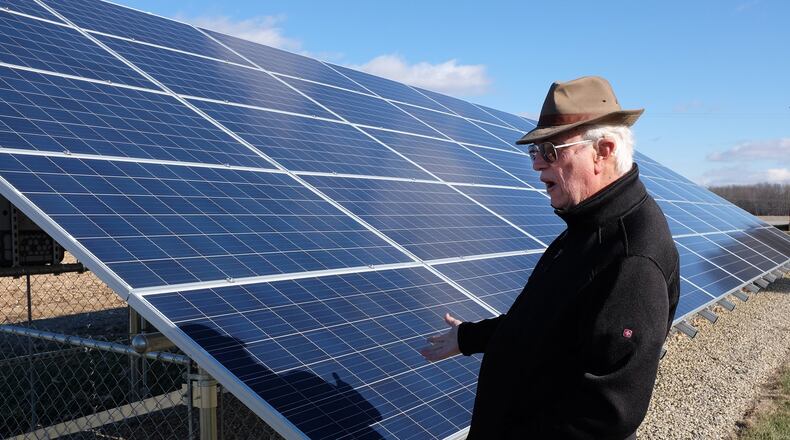Jeff Gambrell, executive director of the Hamilton Civic Society, which he noted is pro-environment, called the city’s proposed regulations “short of being pro-solar — I think it’s missing some key points.”
Howard Plevyak, who lives in downtown Cincinnati but owns a business in the city and has a hangar at the airport locally, said, “I think what you proposed here does fall a little bit short,” although he and others praised the city for moving toward buying solar power and taking citizen input.
“We all should be looking for cheaper, and cheaper and cheaper electricity,” Plevyak said. “And more important, cleaner and cleaner and cleaner air.”
All who spoke praised the city for moving forward to buy solar power from residents, and eventually, with plans to purchase from businesses.
Here are key parts of the city’s solar-purchase plans, which now will be re-evaluated based on the public comments before eventually going to the council:
- To participate, a customer must have a meter capable of measuring excess electric flow that isn't used at the property and instead goes to the city's electric system. The meters are to be installed at customer expense.
- Customer accounts will be credited for energy delivered to the electric system.
- The solar panels must be owned by the property owner — not a third-party alternate supplier — and must meet city interconnection standards.
- Panels must be located on the customer's property and serve only that property's needs. It can't serve other customers.
- The panels must be limited to the property's electric requirements, and must automatically disconnect from the city's electric system during power outages.
- The solar-purchase program is limited to 1 percent of the city electric system's peak demand for the previous year.
Gambrell suggested the city loosen some of those proposed restrictions, such as those that prohibit third-party suppliers and that limit solar-panel capacity to the property’s peak needs.
With so many Hamilton properties being rentals, and with many people who own their homes unable to afford solar devices, “it’s still very costly, still, to purchase,” Gambrell said. He advocated for allowing “community solar farming, which is where residents who live in these rental properties, who can’t afford or are not committed to install solar panels on their properties, that they can actually invest in shares of solar energy from a third-party candidate.”
Gambrell also is concerned about limitations the city wants to place on how large of solar facilities property owners can install.
He said he used to work at the Cincinnati Zoo and Botanical Garden, where solar panels can generate more power than the zoo needs, so electricity is sold.
“With the city being long on energy (producing more than it needs), we don’t have a need for that energy,” Perry said.
More than a dozen attended the meeting, some of them city utility employees.
Although solar panels could produce half a property’s electric needs, under the city’s proposal now being considered, a typical customer would see electric bills reduced by just under 23 percent, or about $422.17 on what otherwise would be a $1,847.62 annual bill. That works out to a $35.18 savings per month.
If the savings were lower, that would cut into the costs allocated to each electric customer for debt services and other fixed costs associated with upkeep of the city’s electric network, said Nathan Perry, the city’s utility business manager, who outlined the proposed purchase program.
It’s important for the city to charge customers fixed monthly costs to recover money necessary to pay ongoing debts for such capital investments as the city’s hydroelectric plants on the Ohio River, as well as other fixed ongoing operating costs for the city’s electric system, Perry said.
“We truly want to make this work, but we want to make it work well for all our customers,” Perry said.
Resident Mike Riechers suggested the city consider incentives for “early adopters” of solar power: “The persons that do this should be given all the incentives they possibly can.”
Perry said as customers start installing panels, the city can monitor how solar generation impacts the city’s electric system, and then officials can adjust over time.
“About 48 percent of all the energy you receive is from renewable resources, specifically hydro,” Perry said. “We’ve had a long-term investment in hydro in this community, and we’re proud to be able to offer a large renewable generation portfolio at a very competitive price.”
Utility officials will evaluate public comments and may adjust their proposal before taking it to the city’s Public Utilities Commission and ultimately, the council. A timeline for council consideration has not been set.
About the Author
